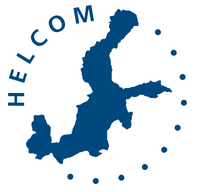For the first time, an effort is being made by seven Baltic coastal countries to coordinate the counting of all the waterbirds wintering in the Baltic Sea, a long-term challenge as monitoring of the highly mobile animals requires scheduled cooperation between the states. The shallow waters of the Baltic Sea are important for wintering waterbirds such as diving ducks, divers and alcids.Long-tailed duck (Clangula hyemalis) migrates from the Arctic to the Baltic Sea winter. Photo: Bettina Mendel. Monitoring of birds requires international coordination in order to procure reliable estimates of the number of birds wintering in the Baltic Sea. If countries were to conduct surveys in different months, the same individual might be counted in several countries which would impair the abundance estimation.Describing the Baltic-wide bird distributions and abundances will be attempted jointly for the first time during January and February 2016 by Estonia (University of Life Sciences), Denmark (Aarhus University), Finland (SYKE), Germany (Kiel University), Latvia (Latvian Ornithological society), Poland (various institutes) and Sweden (Lund University). The coordinated survey is conducted from aircrafts or ships, covering a pre-defined network of monitoring transect lines. Successful monitoring requires good weather conditions with low winds and good visibility.Reliable information on the number of waterbirds wintering in the Baltic Sea, as well as the distribution of the birds at sea are important for conservation efforts and for assessing the status of the marine environment. The Baltic Sea is an important wintering ground for species that breed in the region as well as for species breeding in the high Arctic.The long-tailed duck (Clangula hyemalis) is one species for which the Baltic Sea is a critically important wintering ground, and it is listed as threatened under the International and the HELCOM Red List (). The long-tailed duck migrates from the Arctic breeding grounds to the Baltic Sea where it congregates in flocks in the open sea. Monitoring these dense aggregations of birds provides the best information about the population abundance, which has seen alarming decrease in recent years.The need for a coordinated survey effort as well as coordinated handling of data on seabirds has been identified as an important area of cooperation in HELCOM, which has recently adopted joint monitoring guidelines.The planning of the coordinated survey on wintering seabirds among the above partners started over a year ago. The aim is to continue the collaboration in the future, regardless of different monitoring schemes in the countries involved.During January and February 2016 the collaborating partners will report about progress with the survey across the Baltic. Frequent updates of the map, indicating which areas have been surveyed will be made available.Figure. 1: Planned monitoring transects to be covered during the seabird survey in winter 2015/2016, mostly referring to aerial surveys (ship-based surveys in Poland). * * * Note for editorsThe Baltic Marine Environment Protection Commission, usually referred to as , is an intergovernmental organization of the nine Baltic Sea coastal countries and the European Union working to protect the marine environment of the Baltic Sea from all sources of pollution and to ensure safety of navigation in the region. Since 1974, HELCOM has been the governing body of the ‘Convention on the Protection of the Marine Environment of the Baltic Sea Area’, more commonly known as the Helsinki Convention. * * *For more information, please contact:Lena Avellan Project Manager HELCOM Tel: +358 40 162 2054 E-mail: lena.avellan(at)helcom.fi Ib Krag PetersenSurvey CoordinatorDepartment of BioscienceAarhus University, DenmarkTel: +45 242 11614E-mail: ikp(at)bios.au.dk
Seven Baltic coastal countries have just started scheduled and coordinated counting of all the waterbirds wintering in the Baltic Sea.
